Manaka Hamono Tanrenjo
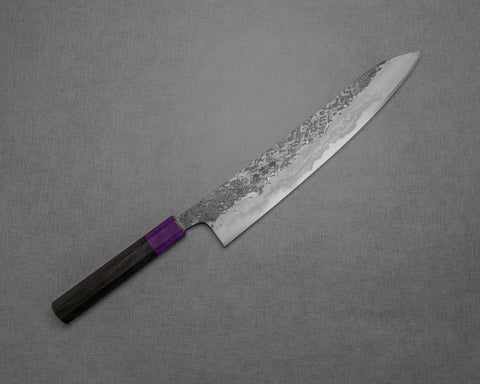
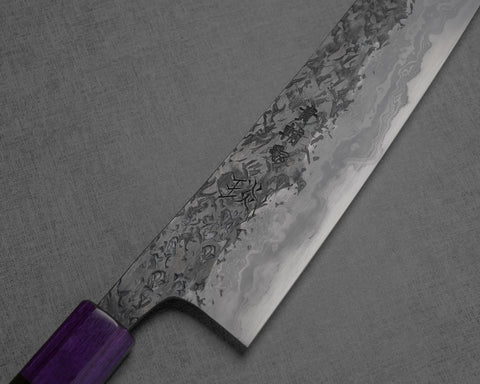
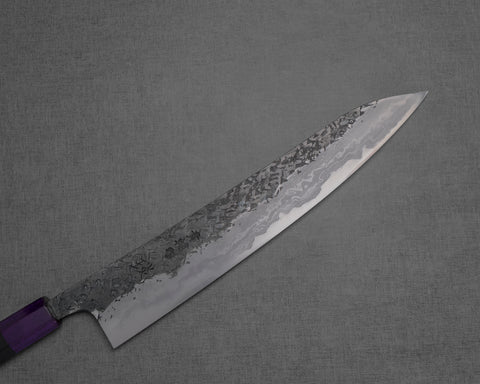
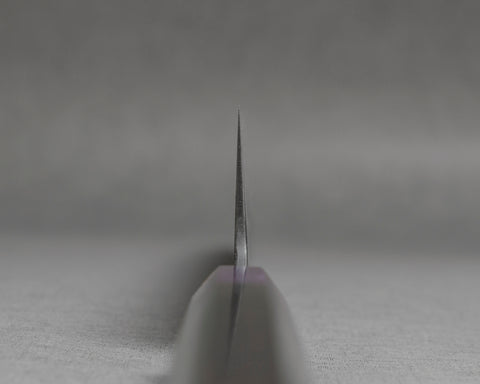
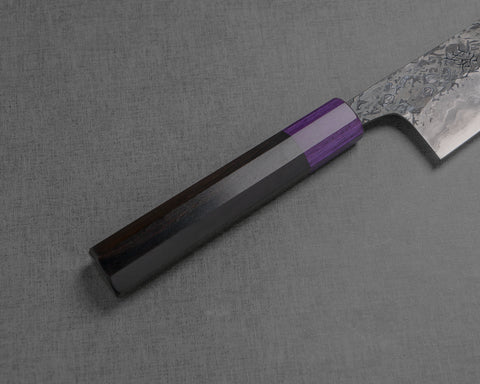
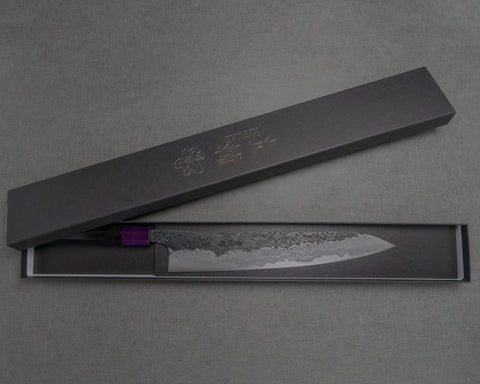
Kisuke "Enn" Aogami #1 Hon-Warikomi Kurouchi Tsuchime Damascus 280mm Gyuto with Violet Pakkawood Handle
Pickup currently unavailable
Crafted with remarkable Japanese expertise, this Gyuto is a true masterpiece. Boasting an Aogami #1 core steel and cladding composed of Aogami #2 and Aogami soft iron, this knife is tempered to an impressive hardness of 61-63HRC. The unique Tsuchime (hammered pattern) and prominent engraving are signature elements of the renowned artisan, Kisuke Manaka. The name "Enn," meaning flames in Japanese, is a fitting description for this stunning appearance. Whether you're a professional chef or a collector, this Gyuto is a must-have item that will surely impress with its unparalleled beauty and exceptional performance.
Spec:
- Origin (Made in): Kasukabe, Saitama Prefecture, Japan
- Brand: Manaka Hamono
- Craftsman: Kisuke Manaka
- Knife Type: Gyuto
- Blade
- Construction: Warikomi
- Grind: Double-edged Blade (50/50 Grind)
- Hagane (Core Steel): Aogami #1 (Blue #1)
- Jigane (Cladding): Aogami soft iron and Aogami #2 (Blue #2)
- Hardness: 61-63 HRC
- Hand-forged, hand-grind, hand-sharpened
- Blade Finishes:
- Tsuchime (Hammered)
- Kurouchi
- Damascus
- Hon-Kasumi Polish
- Blade Length: 280mm (11")
- Blade Height (at heel): 51mm
- Spine Thickness
- Above heel: 3.7mm
- Middle: 2.3mm
- Handle
- Shape: Hachikaku (Octagonal)
- Material: Ebony
- Kuchiwa: Violet Pakkawood
- Length: 145mm
- Overall Length: 440mm
- Weight: 255g (8.99oz)
- Engraved Mark: In Japanese Kanji "Kisuke" (貴輔), "Enn" (琰)
About Kisuke 貴輔 / Manaka Hamono 間中刃物鍛錬所
Kisuke Manaka is the 5th generation blacksmith at Manaka Hamono, a workshop founded in 1872 in Kasukabe, Saitama Prefecture of Japan. Kisuke Manaka did not inherit the workshop from his own family, instead he was married into the Manaka family, and eventually became a full-time, professional blacksmith. Since his father-in-law (the 4th generation Manaka) was more a retailer, he was not capable of teaching Kisuke Manaka any blacksmithing skills. Luckily, Kisuke Manaka’s grand-father-in-law (the 3rd generation Manaka) had left a lot of tools and equipment, as well as books and notes on blacksmithing, he was able to teach himself during the process, and had master Tsukasa Hinoura as his mentor.
Care:
Aogami #1 (Blue #1) steel is a premium Japanese high carbon steel for knife making. Despite some corrosion resistant quality (for a carbon steel), it is not stainless, therefore you should wipe your knife dry after each use. Patina will develop over time. Rust may develop if left in prolonged contact with water or acidic food. Use a rust eraser to clean if rusts develop. Avoid cutting into bones, frozen foods, hard fruit pits.
Cutting Surface:
Recommended cutting surface: wood, rubberized boards and high-end composites, and quality plastics such as polyethene make acceptable cutting surfaces, and will help protect and prolong knife’s edge. AVOID glass, metal, countertops, and other rigid, non-forgiving surfaces.
Sharpening:
We recommend sharpening all quality Japanese knives on whetstones, as we believe they yield the best results for your knives.
Free Shipping
Free Shipping on most orders.
30 Days Return
Return unused within 30 days for a full refund, no questions asked (terms apply).
Top Japanese Makers
All knives made in Japan by top Japanese knife makers.
About
Burrfection Store sources professionally designed sharpening products, and knives from top Japanese craftsmen.
